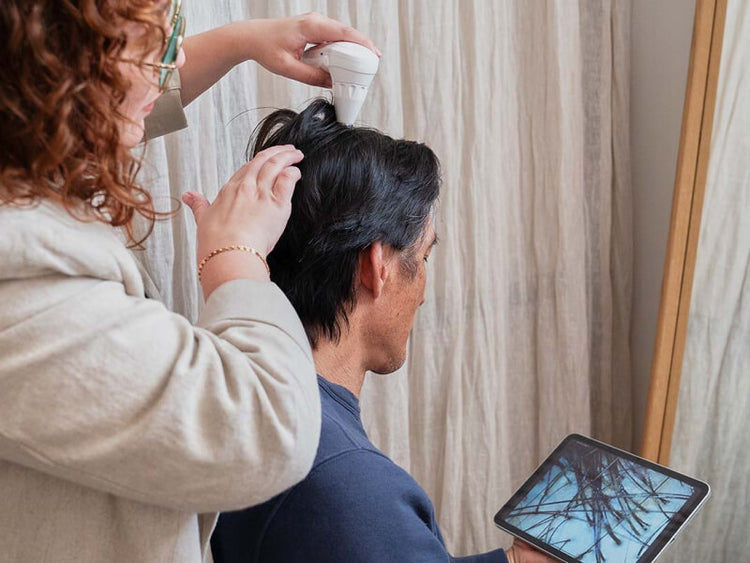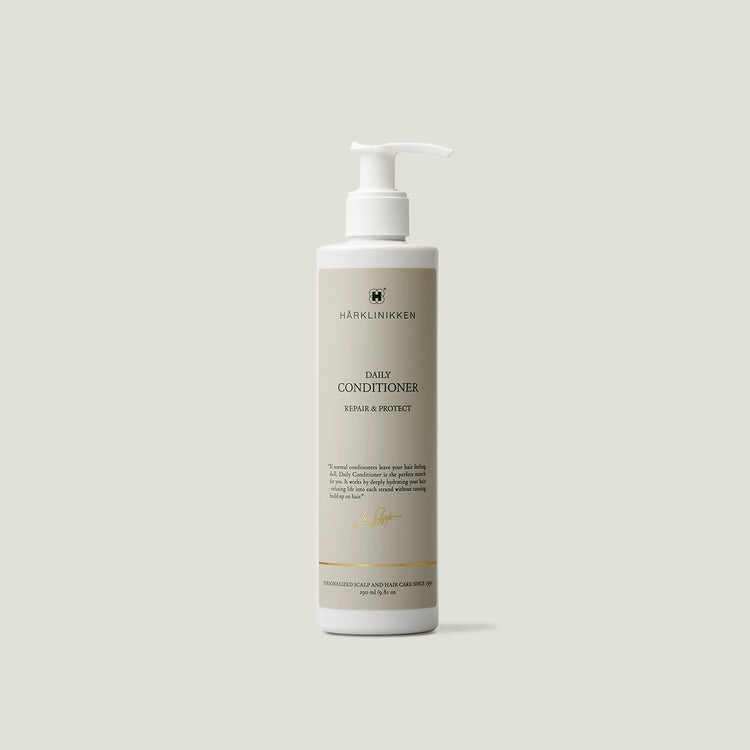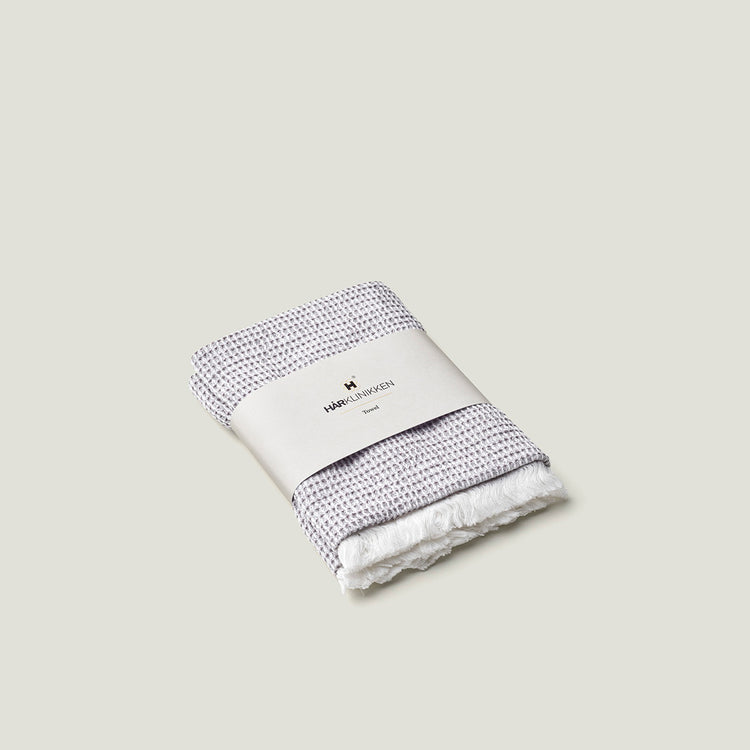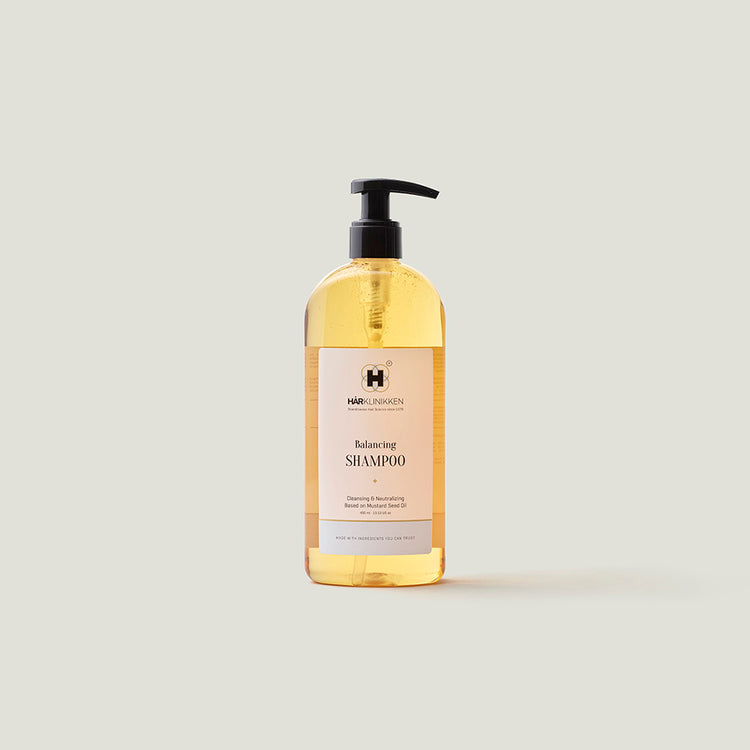One in three women will deal with hair loss or reduced hair volume at some point in their life – a common experience that’s thankfully becoming increasingly normalised and discussed.
In some ways, your hair knows you better than you know yourself. It can signal elevated stress levels, hormonal imbalances, vitamin deficiencies and more. If you are experiencing an unusual amount of shedding, your hair might be trying to tell you something. When it comes to hair loss, understanding why it’s happening is central to determining how to treat it.
Here we take a look at the most common causes of hair loss.
Genetics
Many cases of hair loss are due to genetics, so it’s worth speaking to your family to find out if thinning hair runs in your family. Androgenic alopecia (widely known as female and male pattern hair loss) is the most common form of hair loss and is caused by a combination of genetics and hormones. It is a slow, gradual and progressive reduction in hair density where hair follicles become smaller over time due to a sensitivity to the androgen hormone (which is responsible for the regulation of hair growth), causing the hair to become finer and weaker with each hair growth cycle.
Poor Scalp Health
The importance of scalp health cannot be understated when it comes to hair gain. Home to millions of microbes that play a critical role in hair health, the scalp is a delicate ecosystem. These microbes impact everything from density to strength, volume and vibrancy. When the scalp is properly cleansed, nourished and cared for, the microbiome remains balanced and functions optimally, resulting not only in hair growth, but quality hair fibers. However, when too much sebum or buildup accumulates on the scalp (usually due to irregular or suboptimal cleansing), it can clog or damage the hair follicles. Finding the right scalp care routine for you is therefore imperative for achieving healthier, stronger hair.
Pregnancy
A lot of individuals experience an excess of hair shedding after pregnancy – and the culprit is oestrogen. During pregnancy, oestrogen is elevated to higher levels that cause hair follicles to remain in the growth phase for longer. But after delivery those levels drop suddenly, shifting the hair follicles into the resting phase and resulting in significantly increased hair shedding. The shedding typically starts a couple of months after giving birth, with most cases lasting three to six months. In some instances, a new parent may find that the stress of pregnancy and/or delivery triggers a genetic predisposition to hair loss, meaning treatment might be needed.
Ageing
Just like our skin, our scalp ages. Also similar to skin, every person’s scalp ages differently. As we age, the rate of hair growth slows and nearly all of us will experience some level of hair loss. It’s rare for somebody to have the same hair at 50 as they did as a teenager. Follicles shrink in diameter, strands become thinner and more diffused, and it becomes more difficult to grow long hair. This process is accelerated during menopause when hormone fluctuations (including decreased oestrogen and progesterone, and increased FSH levels) can cause hair follicles on the head to shrink, which leads to hair loss.
Stress
Your body’s anatomical hierarchy activates when you experience physical or mental stress. It devotes resources to essential functions, while others deemed non-essential are put on pause – for example, hair growth. This involuntary prioritisation can lead to telogen effluvium, a condition where the hair’s normal life cycle is disrupted, causing less hair in the growing phase and more in the resting and shedding phases. Occurring two to three months after a stressful event triggers the condition, it manifests as widespread hair loss and thinning. The good news is that once the stress alleviates, the hair growth cycle should return to normal.
Unbalanced Nutrition and Vitamin Deficiencies
The skin – including that on the scalp – is a living, active organ that requires sufficient nutrients to function at its best. Failing to get the proper nutrition (including the right amount of calories, minerals, essential fatty acids, and vitamins) can have a significant impact on the scalp and, in turn, the strength and structure of your hair. Thin strands are usually a sign of iron, vitamin D and B12 deficiencies, or a lack of protein in your diet. The latter is especially important as keratin (a protein) provides strength and robust structure to hair.
Certain Hair Styles
Super-tight ponytails, slicked-back buns, taut braids – all of these styles put excessive strain on your hair follicles, compromising their ability to produce and sustain strong, healthy hair. The strain created by some styles result in micro-trauma within the follicle that prevents blood flow and nutrients from reaching the bulb, effectively causing it to shut down. Depending on the style, this type of hair loss will oftentimes be localised to the specific area where the most tension occurs.
If you’re worried you may be experiencing hair thinning, book an in-person consultation with one of our Hair Specialists.





